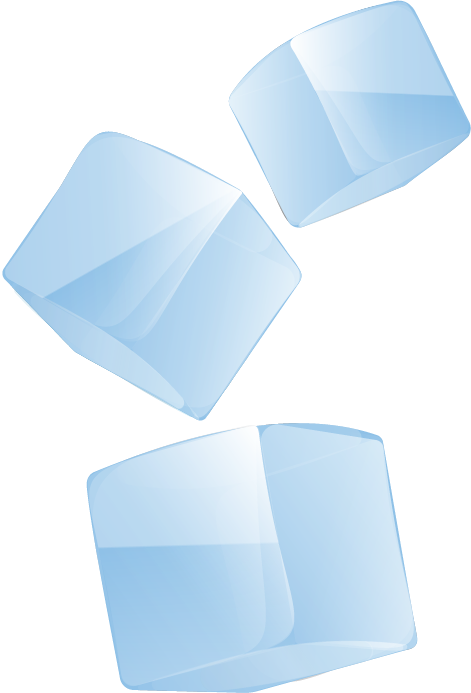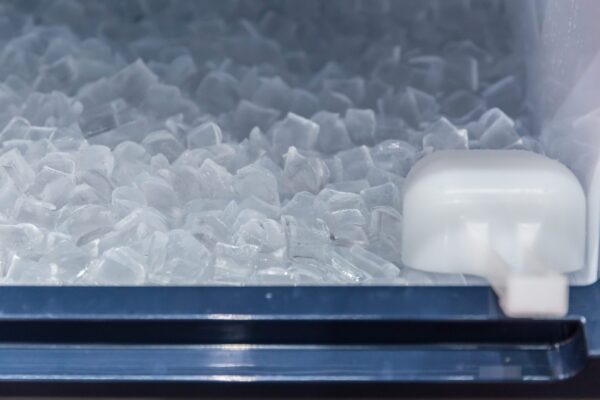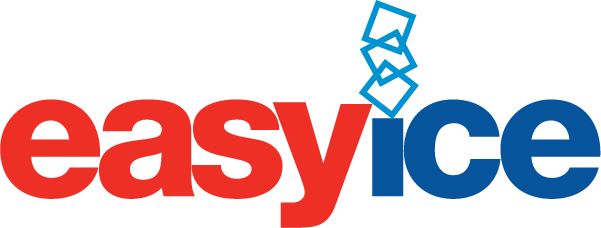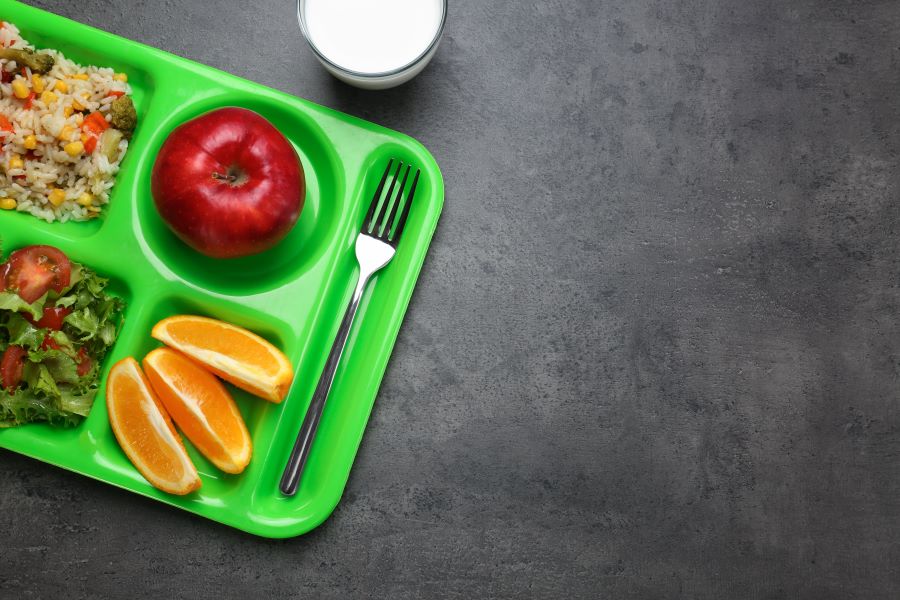From K-12 to postsecondary, there is one piece of equipment that supports learning you might not think of: the ice machine. Ice machines may not have starring roles like computers, projectors, or audio equipment, but they’re part of every school campus. School ice makers work behind the scenes in education in numerous ways, including:
- Ice machines and bins in the kitchens that serve cafeterias and dining halls
- Ice and water dispensers in teachers’ lounges
- Ice chip makers in athletic departments for compresses, ice baths, and drinks
- Ice makers or ice and water dispensers in dormitories
- Self-serve beverage and ice machines in high school and college/university cafeterias
Increased Concern for Sanitation and Safety
It’s never been more important to limit the spread of germs and keep students and faculty safe. Unfortunately, improper use of ice makers can contaminate ice machines, which in turn, will expose students and staff to germs. The good news is that by following some simple rules, ice machines can remain uncontaminated. Keep reading to learn about proper ice machine usage protocols of safety.

First Step: Choose the Safest Ice Machine Equipment
Some ice machines sit on top of a drink dispenser. These are called beverage and ice machines. They may be found in teachers’ lounges, dining halls, cafeterias, or other shared spaces on K-12 and college campuses. In the past, these self-service machines were activated to distribute ice or drinks by a lever or button.
Now, more schools are investing in touchless ice and beverage dispensers. These hands-free drink and ice machines are triggered to dispense by a sensor. This means no human contact is made with the machine, preventing the transmission of germs to the machine and to future users.

Tired of dealing with ice machine issues on your own?
Find out how Easy Ice makes them disappear.
Though touchless dispensers are ideal, many school campuses already have traditional machines installed. These schools will need to enact strong usage policies to reduce the spread of germs. Post the rules near every beverage and ice dispenser. It also helps to enforce the rules with staff so they can model safe usage for students.
School Ice or Water Dispenser Rules
- Sanitize hands before and after usage. Most schools find it helpful to set up a sanitizer dispenser near the beverage station.
- Don’t dump other beverages or food into the drip tray. The drip tray should only be for catching overflow of the beverages or ice being dispensed by the machine. Sometimes students or staff dump other beverages, like coffee with milk product in it, or food into the tray. It’s not meant for this. Bacteria can grow in the drip tray from these foreign substances. Then the bacteria can be transferred to students and staff when dropping ice hits the contaminated tray and splashes.
- Use single use cups or clean containers. Do not allow refills on used cups. Instead, encourage students to get each additional drink in a fresh cup.
Ice Transfer
Some ice machines are not accessible by the greater staff and student population. Instead, ice is removed from large ice bins to fill other containers. For example, cafeteria staff may access the ice bin to backfill containers holding student drinks or cold food displays. There may also be an ice bin in the athletics department that staff use to fill cold compresses or ice baths. The rules below relate to safe ice transfer. Ensure these rules are posted near any ice machine and are followed for safety:

School Ice Bin Rules
The inside of the bin is prone to growing biofilm (also known as algae), because it’s continuously wet. Luckily, most biofilm is not dangerous (though it should be thoroughly removed during each biannual deep clean). What is dangerous is when bacteria enters the ice bin through human contamination. Ensure employees follow these safe practices to minimize contamination of ice bins and machines:
Scoops and Scooping
- Scoops should be stored outside the ice machine. Keep them off the ground and away from any other sources of contamination. Ideally, the scoop should go in a scoop holder on the side of the ice machine.
- When scooping ice, employees should wear a mask. Contamination can occur when a person breathes on the ice while leaning in to scoop out ice. Take care not to drop anything in the bin, including debris or bodily fluids.
- Employees should never eat or drink while scooping ice.
- The bin door should be closed immediately after filling containers. Do not leave it open in between multiple trips.
Other Ice Transfer Tools
Ice machine accessories should also be handled with care to prevent contamination.
- Ice shovels should be stored outside the ice machine and kept off the ground.
- Ice transport buckets should never be stacked. Instead, hang buckets or store them off the ground on a shelf.
- Ice should never be scooped with the bucket or other container. Only use a scoop to transfer ice from the bin to the bucket.
Cleaning School Ice Machines
It's vital to keep school ice makers and beverage and ice dispensers clean and bacteria free. There are two types of cleaning that ice makers require: regular and deep cleaning. Deep cleaning should be performed by an ice machine expert and entails thorough cleaning, disinfecting, and sanitizing of the entire ice machine – including inside components. Manufacturers recommend two deep cleanings per year, but this is a general rule. More deep cleans may be required for high-traffic machines or units installed in environments with higher levels of contaminants such as yeast or dough. These airborne materials can get into the ice maker through normal use and will cause undesirable build-ups.
Ice makers should be cleaned, disinfected, and sanitized on a regular basis in addition to deep cleans. Regular cleaning can be performed by a janitorial crew, kitchen staff, or other employees. To help reduce any potential contamination, perform the following daily and weekly cleaning tasks:
Ice and Beverage Dispensers
Mix separate solutions of disinfecting spray and of sanitizing spray into spray bottles. Use an EPA-registered food safe cleaner. The cleaner’s label will have specific disinfection and sanitization rates (they are not the same).
At least once per week, spray solutions anywhere beverages could potentially splash and pour solution into the drip tray to go down the drain. Use solutions in the following way:
Spray disinfecting solution first. Leave this solution on for at least 10 minutes, continuing to spray as needed to ensure the surface is wet for the whole time. Then rinse the solution away with water. This solution has a higher concentration of the cleaning agent and must be thoroughly rinsed away.

Need help finding the right ice machine for your business?
Easy Ice has the right machine for you.
Next, spray on sanitizing solution, ensure a two-minute wet contact time, and then let it air dry on the machine.
Frequently pour bleach down the ice maker drain. This may be needed daily or weekly depending on how well students and employees stick to the policy of not dumping foreign substances in the drain.
Ice Makers with Bins
Weekly, follow the instructions above to disinfect and sanitize accessories like the ice scoop, ice shovel, ice buckets, and ice transport carts.
Wipe down the bin door weekly or as needed if it becomes contaminated.
Invest in Student Safety
The importance of keeping students and school employees safe can’t be overstated. Research has shown that, without safety precautions like the rules above, ice machines are likely to become contaminated and to be a spreading point for germs and other bacteria. Proper usage protocols can help minimize that risk. However, there must also be a plan in place for cleaning, disinfecting, and sanitizing ice makers, both regularly and through deep cleans.
Some schools and college campuses choose the Easy way out by getting their ice machines from Easy Ice. Whether they subscribe each time a new ice machine is needed or have us manage their entire campus, Easy Ice subscribers rest easy knowing that we will recommend the right ice maker for their needs and devote ourselves to keeping it safe and clean.
Our subscription includes ice machines from leading manufacturers, deep cleaning and service, any repairs, and even safe, clean back-up ice should it be necessary. Easy Ice means easy access to all the ice students and staff need without the expense and risk of ice machine ownership. Learn more about our subscription here.

As the Co-Founder and COO of Easy Ice, John Mahlmeister has been working in the commercial ice machine industry since 2009. Co-headquartered in Phoenix, AZ and Marquette, MI, Easy Ice is the only national provider of full-service ice machine subscriptions in the industry. Since Easy Ice was founded, the number of ice machines under its management has grown to over 30,000 units across 47 states, with no signs of slowing down.

